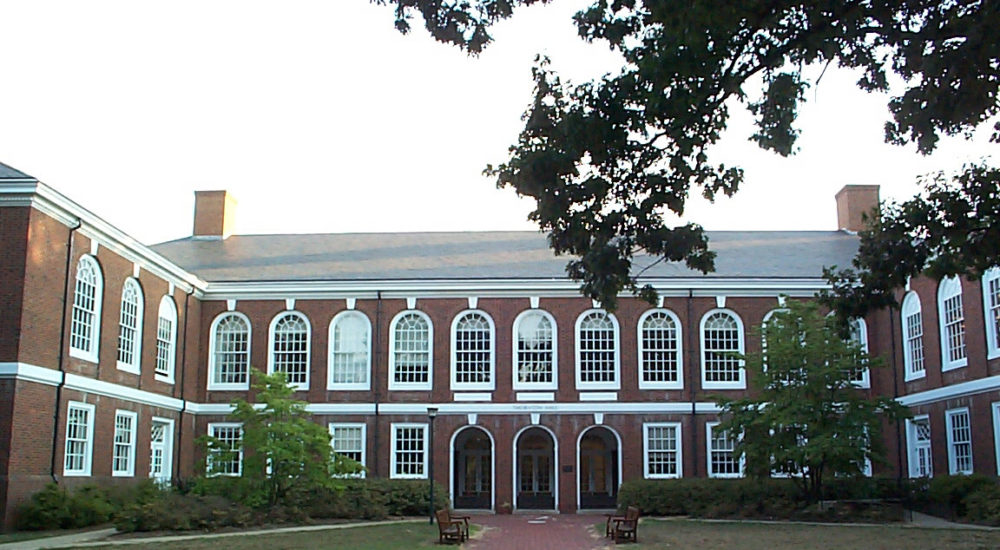In Praise of a Very Bad, but Very Necessary, Bill
A bill to cap in-state tuition at Virginia’s public universities is gaining traction in the General Assembly, reports the Richmond Times-Dispatch.
HB 351, which would cap tuition for the next four years at the 2017-18 rate, was reported 15 to 4 out of the House of Delegates Education Committee and will be heard next in the House Appropriations Committee. The bill, sponsored by Del. David Reid, D-Ashburn, also would limit increases in room-and-board charges to 90% of that of the Consumer Price Index, and would cap the number of out-of-state students at the current number.
I have many problems with this bill. The remedies are arbitrary, and they violate the spirit of autonomy and decentralization which has made Virginia’s four-year colleges one of the best, if not the best, undergraduate systems in the country. But I also understand Reid’s frustration with the stubborn refusal of many of Virginia’s colleges and universities to heed the pleas of middle-class families who are finding the cost of attendance — not just tuition, but fees, room and board — to be increasingly out of reach.
There are times when subtlety and nuance don’t do the job. Sometimes, you have to reach for a cave-man club.
The insensitivity of Virginia boards of visitors toward the concerns of the taxpayers, parents and students who are paying the bills has created a political climate in which people begin calling for sledge-hammer solutions. Higher-ed has brought this upon itself.
To my mind, HB 351 is a bad bill. It would place price controls on college tuition, room and board (yet, for some unfathomable reason, leave fees untouched). Throughout the economic history of man, price controls have led to little but misery. For recent examples, look to Zimbabwe and Venezuela.
Price controls on Virginia college tuition won’t lead to hyper-inflation, as in those two countries, but it will create distortions. Controls will reward those institutions that have increased tuition most aggressively in recent years by locking in those charges at a high plateau. At the same time, tuition caps will punish those institutions that have worked most assiduously to control costs and charges but may need the flexibility to raise rates modestly in the future. Also, one can predict from history that institutions will engage in accounting gamesmanship, reclassifying costs in capped categories (tuition, room, board) as student fees or some other kind of miscellaneous charge, the end result of which will be less price transparency than ever.
The cap on out-of-state enrollment also is problematic. Indeed, the enrollment cap is at odds with the tuition cap. Out-of-state undergraduates pay thousands of dollars more in tuition than in-state undergrads. Indeed, they pay more than they cost to educate, in effect subsidizing in-state students. Increasing the number of out-of-state students to increase is a safety valve that helps institutions hold down tuition increases. The bill would take that option away.
But the bill’s worst sin is that it addresses symptoms, not underlying causes. It does nothing to ameliorate the hidden drivers of rising tuition costs, such as:
- The hunger for institutional prestige, which pits university against university in an ever-escalating arms race for superstar faculty and high-SAT students, with the attendant quest for the glitzy buildings and resort-quality amenities that it takes to recruit them.
- Metastasizing administrative staff arising from federal regulations and higher-ed obsessions with diversity, sexual politics, economic development, community involvement, and other non-academic priorities.
- Declining faculty productivity, in which tenured professors enjoy lighter teaching loads so they can spend more time on writing and research, while grubby task of teaching undergraduates is offloaded to a cadre of untenured instructors, graduate students, and adjunct faculty.
- The growth of R&D programs, in which undergraduate tuition subsidizes an ever-expanding apparatus not only of research professors but graduate students, specialized laboratories and equipment, and administrative support whose job is to seek research grants.
Another cause of rising tuition, as we all know, is the cutback in state support for higher education. But budget cuts, as I have explained before, account for maybe 30% of the overall increase in the cost of attendance at college.
The other causes are poorly understood. Higher-ed accounting systems are opaque. Even college administrators themselves may not fully understand what they’re grappling with because, focused on other issues, they don’t compile the metrics or have the accounting systems to answer the kinds of questions that should be asked. And why would they trouble themselves? They would offend powerful internal constituencies if they dared try to reform the system.
I maintain that part of the solution is greater transparency into higher-ed accounting. Rather than impose arbitrary caps, we should pry open the system’s inner workings for all to see. We need keener insight into who pays for what, and we need to compile and track productivity metrics that reflect the cost drivers. Once the underlying problems are illuminated, boards of visitors can compel college administrations to act upon them. Alas, accounting transparency is missing from the reformer’s legislative agenda this year.
Fortunately, there are bills that would partially advance the goal of openness. One would require boards of visitors to allow the public to provide input on planned tuition increases. Another would define the prime responsibility of university board members as to the public, not to institutional advancement and the ceaseless, Quixotic quest for higher rankings.
Despite its flaws, the Reid bill does serve one useful purpose. When faced with the prospect of the sledgehammer — tuition and out-of-state enrollment caps — perhaps the higher-ed lobby will decide it can live with greater openness and a few tweaks to the governance system. If higher-ed refuses to budge on any of these issues, it runs the risk of destroying what little public trust it still enjoys. I’ll have more to say about that in the next blog post.


